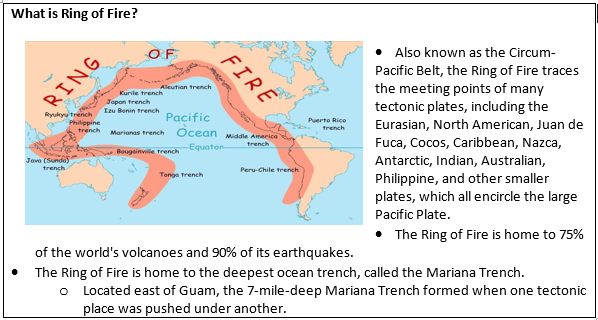

Indonesia's Mount Sinabung erupted recently, belching a massive column of ash and smoke 5,000 metres (16,400 feet) into the air and plunging local communities into darkness with a thick layer of debris.
Context
Indonesia's Mount Sinabung erupted recently, belching a massive column of ash and smoke 5,000 metres (16,400 feet) into the air and plunging local communities into darkness with a thick layer of debris.
About
- What is Mount Sinabung?
- Mount Sinabung is one of more than 120 active volcanoes in Indonesia, which is prone to seismic activity on the Pacific "Ring of Fire," a ring of volcanoes and moving fault lines that surround the ocean.
- Mount Sinabung had been inactive for centuries until it erupted again in 2010. It has been active ever since, occasionally erupting.
- An eruption in 2014 killed 16 people, while seven died in a 2016 eruption. Tens of thousands of people have been forced to leave their homes around the active volcano over the past few years.
Indonesia and Volcanoes
- Indonesia is home to many active volcanoes, due to its position on the “Ring of Fire”, or the Circum-Pacific Belt, which is an area along the Pacific Ocean characterised by active volcanoes and frequent earthquakes.
The Ring of Fire is home to about 75 per cent of the world’s volcanoes and about 90 per cent of its earthquakes.
- The geography of Volcano
- A volcano can be active, dormant or extinct. An eruption takes place when magma (a thick flowing substance), formed when the earth’s mantle melts, rises to the surface.
- Because magma is lighter than solid rock, it is able to rise through vents and fissures on the surface of the earth.
- After it has erupted, it is called lava.
- Not all volcanic eruptions are explosive, since explosivity depends on the composition of the magma.
- When the magma is runny and thin, gases can easily escape it, in which case, the magma will flow out towards the surface.
- On the other hand, if the magma is thick and dense, gases cannot escape it, which builds up pressure inside until the gases escape in a violent explosion
Looking at numbers
- According to the National Museum of Natural History (NMNH), USA, generally, there are about 20 volcanoes actively erupting every day.
- As per the weekly volcanic activity report prepared by The Smithsonian and US Geological Survey’s (USGS) Volcano Hazards program, for the week ending August 4, 2020, there were 17 volcanoes across the world with continuing eruptions.
- As per USGS, there are about 1,500 potentially active volcanoes worldwide.



